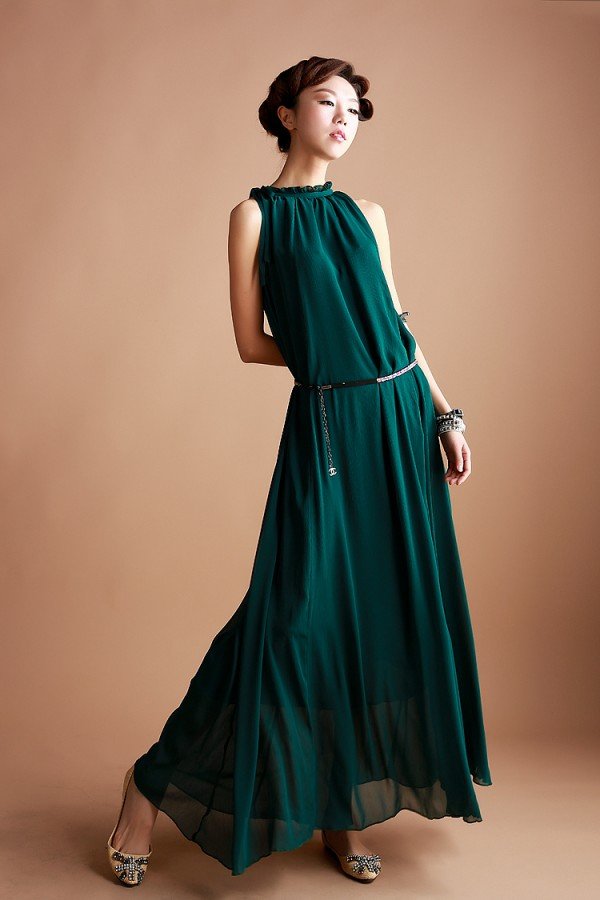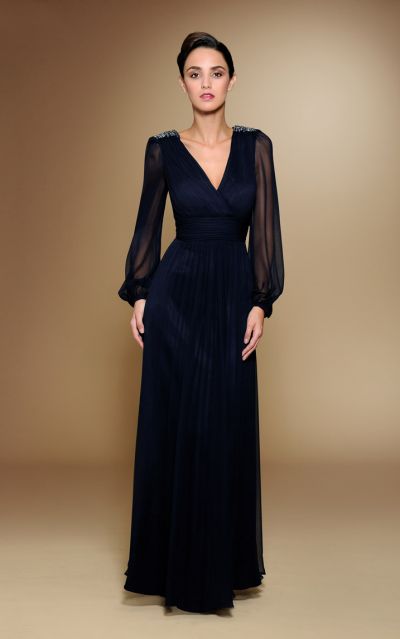Silk Long Dress Biography
Source(google.com.pk)
One way to consider the influence of the trade in silk is to explore the extent to which women were its eager consumers. At one end of the Silk Road exchange was the production of silk, at the other, the demand for it.
Women everywhere eagerly sought the light, soft, sometimes richly decorated, silk material. Since it was a luxury item, it was usually worn only by those who could afford it. Sometimes the wearing of silk was regulated, limited to those of the upper classes as a way to mark social differences. Other times, the wearing of silk was denigrated, seen as a sign of social decadence and decay.
Wearing Silk in Asia: Even in China where silk was readily available, the right to wear it was at times regulated by strict codes. Often it was reserved for use only by the emperor and the highest dignitaries. In the Tang and Song Dynasties, bureaucrats were restricted to using a particular color according to their different functions in society. Later, this was extended to other classes of Chinese society, with peasants forbidden to wear silk until the Qing dynasty (1644-1911).
In India, women’s use of the sari, which can be traced back to the Indus Valley civilization (2800-1800 BCE ), was a perfect market for light material made of silk. Some scholars claim that the growing of silk worms in India was indigenous, that early in its history materials made from silk existed. Others point to the recognizable spread of sericulture from China into India about 300 CE. What is certain is that the trade of Chinese silks to India from late antiquity to the Mongol conquest was major. Again, only the rich could afford the finely-woven, diaphanous silk saris that, according to folklore, could be “passed through a finger ring”.
Throughout Central Asia and beyond, high quality of silk cloth was a popular item. The Persians developed beautiful forms of brocaded woven silk, a technique they developed dating back to the time before the Sassanid dynasty. Used in formal dresses, it eventually became an export item. Material which highlighted traditional Persian images was found in Europe as well as throughout the Middle East, where wealthy women in cities such as Baghdad and Damascus sought out bolts of intricately patterned brocades, brilliantly colored satins, and gold trimmed materials for their veils, and headdresses.
One way to consider the influence of the trade in silk is to explore the extent to which women were its eager consumers. At one end of the Silk Road exchange was the production of silk, at the other, the demand for it.
Women everywhere eagerly sought the light, soft, sometimes richly decorated, silk material. Since it was a luxury item, it was usually worn only by those who could afford it. Sometimes the wearing of silk was regulated, limited to those of the upper classes as a way to mark social differences. Other times, the wearing of silk was denigrated, seen as a sign of social decadence and decay.
Wearing Silk in Asia: Even in China where silk was readily available, the right to wear it was at times regulated by strict codes. Often it was reserved for use only by the emperor and the highest dignitaries. In the Tang and Song Dynasties, bureaucrats were restricted to using a particular color according to their different functions in society. Later, this was extended to other classes of Chinese society, with peasants forbidden to wear silk until the Qing dynasty (1644-1911).
In India, women’s use of the sari, which can be traced back to the Indus Valley civilization (2800-1800 BCE ), was a perfect market for light material made of silk. Some scholars claim that the growing of silk worms in India was indigenous, that early in its history materials made from silk existed. Others point to the recognizable spread of sericulture from China into India about 300 CE. What is certain is that the trade of Chinese silks to India from late antiquity to the Mongol conquest was major. Again, only the rich could afford the finely-woven, diaphanous silk saris that, according to folklore, could be “passed through a finger ring”.
Throughout Central Asia and beyond, high quality of silk cloth was a popular item. The Persians developed beautiful forms of brocaded woven silk, a technique they developed dating back to the time before the Sassanid dynasty. Used in formal dresses, it eventually became an export item. Material which highlighted traditional Persian images was found in Europe as well as throughout the Middle East, where wealthy women in cities such as Baghdad and Damascus sought out bolts of intricately patterned brocades, brilliantly colored satins, and gold trimmed materials for their veils, and headdresses.
The new shimmer and shape of women’s clothes began to attract attention. Endless sumptuary laws were issued at various times, partly to regulate what citizens wore, thus denying certain clothes and fashions to rising social groups such as the bourgeoisie. For example, in France under Charles IX (1550-1574), only princesses and duchesses were allowed to wear silk.
Like Seneca, the church also found signs of moral decline in wearing silk, even when it was worn by men. Bernard, Abbot of Clairvaux, in about 1130, criticized his fellow churchmen and the court for their love of a worldly luxury such as silk. He felt that after Adam and Eve were forced to cloth their nakedness with skins, which he viewed as a sign of their new bestiality, that next they wore wool, and “next the dung of worms, that is, silk.”
In England, this view was enlarged upon. One preacher claimed that wearing “silken garments, which are fashioned from the entrails of worms” are part of clothes which “are now worn rather for vain glory and worldly pomp than for the necessity of nature...and assuredly most of all to excite lust.” 1
Whether lamented or not, the wearing of silk continued to create a demand for designs and fine materials imported from the East. Eventually, inevitably, Europe began to produced silken materials themselves, first in Italy, Sicily and Spain, and then in more northern centers.










No comments:
Post a Comment